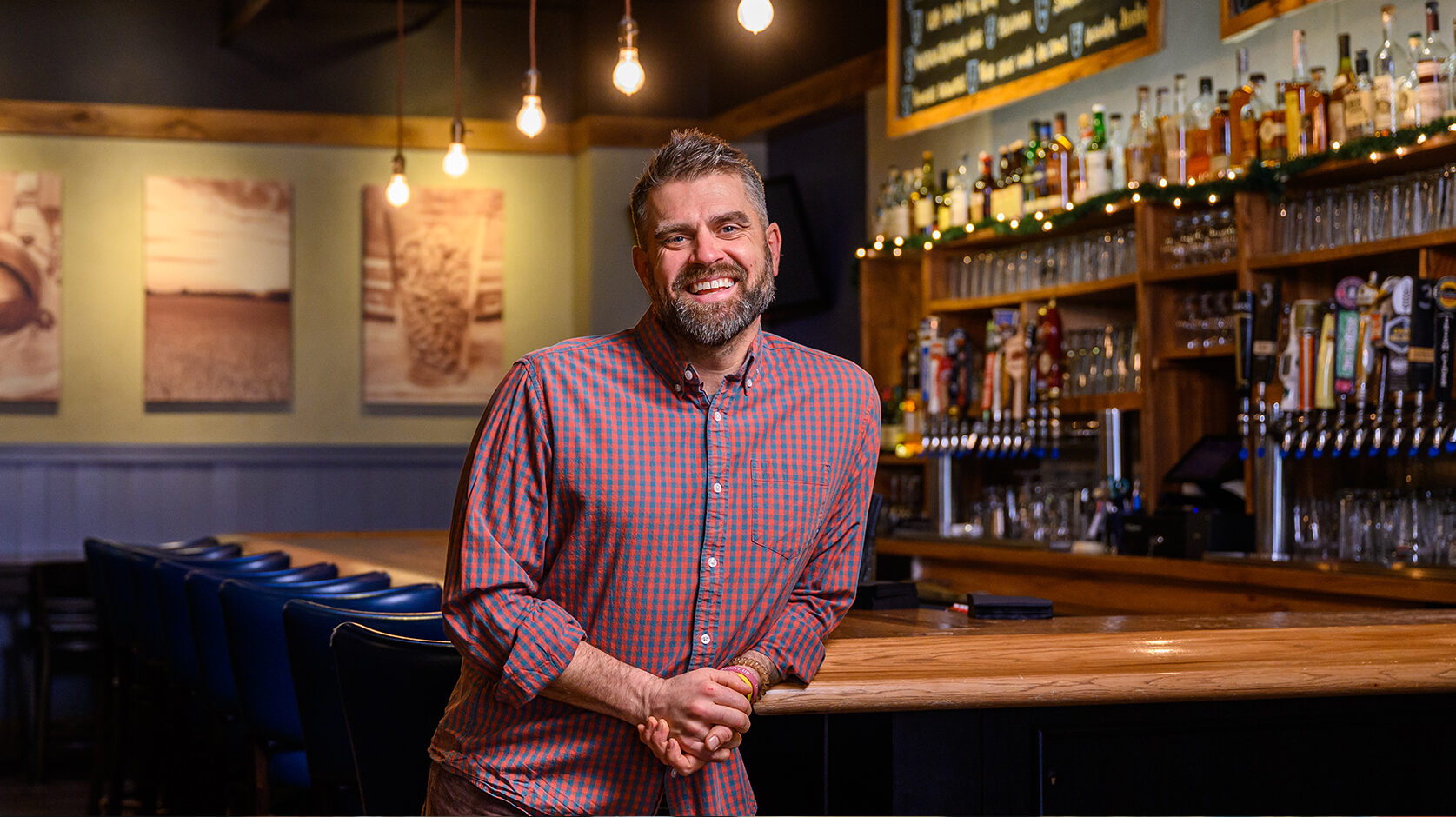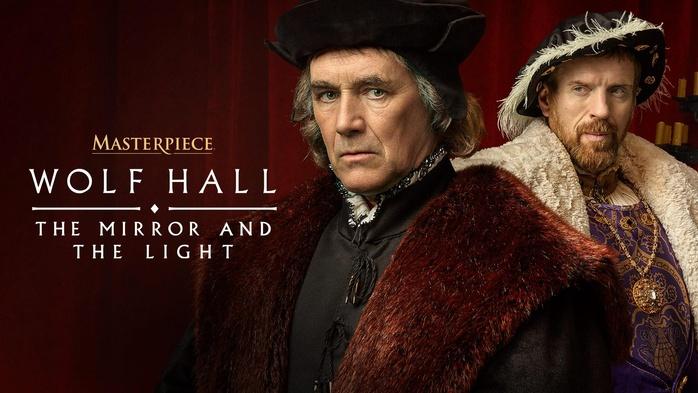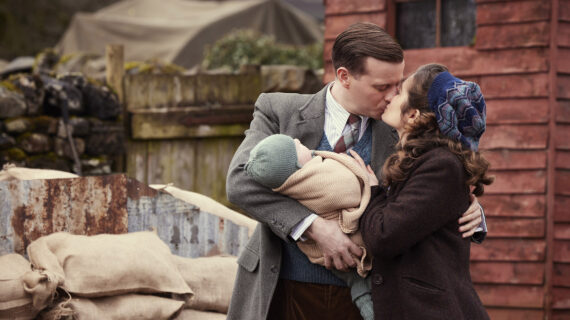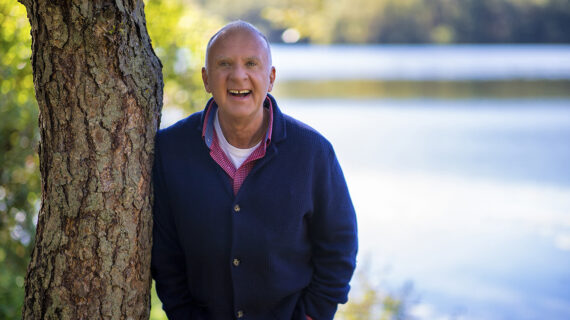– John McGivern: I am in Michigan, on the eastern shores of Lake Michigan, in a former lumber town that is now home to a very big ship.
– Announcer: We thank the underwriters of John McGivern’s Main Streets because without them, we couldn’t make this show.
– Your community’s best selfie spot is Your-Type!
– From the Green Circle Trail to Point Brewery, you’ll find more fun in Stevens Point, Wisconsin.
– Visit Oconomowoc.
Lakes, festivals, shopping, dining.
The heart of Lake Country.
– My father taught me that to make great bakery, you have to do it the right way.
O&H Danish Bakery, where kringle traditions begin.
– Yes, Greendale is beautiful on the outside.
But it’s what’s inside that counts.
Who doesn’t love opening a door to their happy place?
Whether it’s indulging your sweet tooth, winding down, or exploring your creative side.
Come on in!
You just gotta see Greendale.
– There’s always something shining bright in Sun Prairie, Wisconsin.
– Heiser Automotive is honored to help John McGivern and his team arrive safely to many Main Streets.
We are committed to remaining true to the Heiser way: Do what’s right for our customers, our employees, and the communities we serve.
We are happy to help.
– Announcer: Horicon Bank, West Bend Insurance Company, the Friends of Main Streets, and the Friends of PBS Wisconsin.
– ‘Cause these are our Main Streets Somethin’ ’bout a hometown speaks to me There’s nowhere else I’d rather be The heart and soul of community’s right here On these Main Streets – I am in Waterfront Park in Ludington, Michigan.
In the 1850s, settlers came to start lumber mills.
And the interesting thing, once the lumber was all gone, the lumber barons stuck around.
Ludington has a population of 7,700 people.
It’s 3.6 square miles, and it’s in Michigan’s Lower Peninsula.
It is right on the lake, right in the middle of the coast.
And it’s about 100 miles northwest of Grand Rapids.
This is Ludington, Michigan.
Emmy, why did the lumber barons stick around after all of the forests were gone?
– Emmy Fink: You know that feeling we get after we’ve been to a community filming where we fall in love with the people, we fall in love with the area?
That’s exactly the feeling the lumber barons had.
So they decided, “Let’s bring in some electricity and some telephones and some transit and make a go of this.”
And no one did more for this community than James Ludington.
And his story, he came to this area because he was gonna run a mill that he had acquired through a defaulted loan, and he just kept adding more bridges, more roads.
He just did so much for this community that they renamed it after him.
He built this city, not on rock and roll.
– Nope.
– On woods and water.
– On woods and water.
So I get the woods because they were lumber barons.
But where does the water fit in?
– By 1950, this was the busiest carferry port in the entire world.
– And when you say carferry, you’re talking about… [foghorn blaring] …that big girl right there.
– Oh, her, yeah.
The S.S. Badger.
One of only two Lake Michigan carferries still in operation today.
600 people can go on her, 180 vehicles.
And it’s how we got over here.
– We could either do this, or we could drive from Milwaukee, around Chicago, and then up to Ludington.
– John: But come on.
– Emmy: And, I mean– – John: And it’s beautiful day for sailing.
– Emmy: You can sunbathe.
Look at these, we got chaise lounges.
– I gotta go because I’m calling bingo in a minute.
– Michael: My name is Michael, I’ll be calling bingo today.
Also today, we have John McGivern’s Main Streets.
[applause] You guys know him?
– Attendees: Yeah.
– Michael: And you still came?
[all laughing] Okay.
You ready?
– Let’s go.
– Here we go.
– I 21.
No, ma’am, you don’t have bingo.
What?
[all laughing] I 22, I almost said 122.
– Michael: I told you earlier, this is hard.
– John: G 54.
[water splashing] – You know, John’s always going to special places.
He’s not the only one today!
This room right here is the most important room on the ship.
Thank you so much for letting us up here.
What do you love most about this job, the view?
– Mike Martin: The view out of my office is absolutely spectacular, as you see.
I love interacting with our passengers, with the people.
Everybody’s having a good time.
And it’s just a great experience to walk around and talk to people and see where they’re from and what they’re doing.
– Are there any more of these in the Great Lakes?
Are there any more of these anywhere?
– Thom Hawley: No, this is the only one.
This is the only one that goes across the lake and that’s steam powered.
And it’s 71 years old.
– John: It’s really cool.
– It’s really cool.
– And I bet you have guests from all over the world who want to experience this.
– We do, we do.
It’s been millions of people, and a lot of the people remember our communities, Manitowoc and Ludington, by the experience they had aboard the Badger.
– Mike: And it’s just such a big component of the lifestyle of the two kind of small communities.
I don’t think you can overstate that.
– Thom: We think we have a really unique vessel here, and we love to share it with others.
[fog horn blaring] That’s how we welcome everybody to Ludington.
It’s with our lighthouse.
– So, Emmy, if I ever retire, guess what I’m gonna do.
– What?
– I’m calling bingo on the Badger for the rest of my life.
Did you know that the S.S. Badger has a sister ship, the S.S. Spartan?
The Spartan was decommissioned in 1979, and now it’s used mostly for parts for the S.S. Badger.
I have a question.
How did the Badger and Spartan get their names?
– Hey, I have the answer.
– I knew you would.
– Stay right here.
– Here she is.
– It might be the easiest trivia question we’ve asked you all season, but the ships got their name because they are two of the mascots from the states.
You know, Michigan State Spartans.
– Right.
– And the Wisconsin Badgers.
But I’d just like to point out that it’s the Badger that is still running.
– Still running.
– Go, Wisconsin!
– John: It’s always fun to come to a place that has a status of being iconic.
How did this all happen?
– Barry Neal: In 1948, my grandfather ran, you know, the small ice cream parlor then that had a jukebox in the corner.
And, yeah, no, it was a really good, good life.
And then I came around in 1960, and at that point, my dad and my grandfather had gone to exclusively producing ice cream.
– John: But now, it’s full-service everything.
– Barry: Yeah, we do breakfast, lunch, and dinner.
– John: Is ice cream still made here?
– Barry: It is, yeah.
My dad used to say that my grandpa made 100,000 gallons of ice cream in a year, and my dad said I made 100,000 gallons of ice cream in a day.
We make somewhere between about 28 million and 30 million gallons a year.
But the fourth generation is here.
My son-in-law is our GM.
My grandson, Everett, loves to work with me, so.
– John: Great, and a really popular place in town.
– Barry: Yeah, there’s lines.
So I guess that means that we’re popular.
– Andrew, what do we got?
What are you going with first?
– Right now, I am just making one of our Super Pigs dinners.
– Super Pigs?
– Yep.
– What’s that?
– That is our Amaretto Cherry Moose Tracks.
– Oh, that looks good.
– Andrew: Coconut joy.
Pistachio here.
[John laughing] Do some Michigan Pot Hole.
– John: Beyond Chocolate.
– Andrew: Superman.
– John: There was a lemon something as well.
– Andrew: Lemon cheesecake.
– And the Blue Moon, right?
– Blue moon, yeah.
– Throw it in.
– Barry: Blue Moon is Midwestern United States flavor.
– John: And flavor-wise, what is it?
Barry: It’s– Nobody knows.
– Whip it, Andrew.
[whip cream spurting] Flavor-wise, is it different every season?
– Barry: So we run typically 42 flavors of ice cream in a summer season.
You know, in the winter, we’re about 36 flavors.
We change it up, which is a big deal to people.
For the most part, I want to have them find what they’re looking for.
– John: Yeah, sure.
– If I take a flavor off, they’re mad.
Don’t be crabby.
You’ll have to leave, right?
[both laughing] – Here’s my Ludington tip.
Jamesport Brewing Company.
Back in the late 1800s, this building housed Johnson Brothers Saloon.
Then for the next 100 years-plus, it was a variety of different businesses.
But it’s back to its beer roots 110 years later.
This is their flagship beer, the Blueberry Wheat.
Okay, I’ll drink it.
Fantastic.
– If you’re looking for a souvenir from Ludington that’s not a keychain or a shot glass, you really should consider a beautiful piece of art that you can hang on the wall.
Come on, it’s in here.
Todd and Brad Reed and Rachel Gaudet are a family of photographers who tell Michigan stories through photos and text.
– Brad Reed: When I first saw her, it kind of took my breath away.
– She was over here.
– Yeah.
– Brad: And I saw this negative space.
So I waited ’til she got into there, and it turned out to be one of the best photos I’ve ever taken.
This is the biggest cloud we’ve ever seen.
– It looks mean.
– My dad shot this out of a bedroom window.
And then the next morning when we downloaded it, we found this couple here having an electric kiss.
– Rachel Gaudette: Yeah, we had no idea, looking at the back of the camera when he brought his camera in, that they were there.
– Todd Reed: Nothing I like better than a storm.
We look for magic moments during storms and when storm light comes up.
– Rachel: You know, I think there are times we hope we set out to get something.
But when we see the final image, especially when you can see it bigger on the computer or in print bigger, you know, it definitely feels different.
– You’re like, “That was really good.”
They have books and calendars and puzzles that celebrate their views: beautiful, spectacular Michigan.
Now that’s a souvenir.
[gentle music] We are outside the Cartier Mansion.
It’s a bed and breakfast.
And this is your house and your business.
And you do a really good job.
Detail is really what you guys are best at.
Tell me the history.
– Jenna Simpler: All right, absolutely.
Built in 1905 by Warren Cartier and his wife, Kate.
Warren was an entrepreneur, a civil engineer, and wanted to come back to Ludington and make this his forever home.
Built the house in 18 months.
– John: Oh.
– Jenna: $100,000 was– – $100,000?
– $100,000, I know.
That’s what you get for $100,000, I know.
– Chris Simpler: Quite a steal.
– Come on!
And he built it across the street from his parents.
And did he want to outdo his dad a bit?
– Jenna: Well, of course, he had to make himself look a little bit better than dad.
And he did.
– So when you bought the mansion, was the Ludington House part of that as well?
It wasn’t?
– There were actually other owners next door running the Ludington House, and they were looking to retire.
So they had reached out to us one day and asked if we were interested.
And we said, “Absolutely.”
– Chris: It’s a really good fit.
Two slightly different types of properties, one a little bit more traditional, and then, of course, the modern mansion and then the carriage house.
So you have, you know, a little bit of a different feel and price point depending on what people are looking for.
– Here’s the stable.
What did Cartier do?
– His father was the lumber baron.
Warren was more of an entrepreneur.
– Chris: One of my favorite stories with the Cartier family was they brought the bank into Ludington and during the Depression, personally stood behind the deposits so that people had the confidence to keep going.
– It’s like It’s a Wonderful Life.
– Yeah, absolutely, yeah.
– Yeah, pretty cool, right?
– John: We’re off to the King suite.
I wanna move in here.
Did you do the design?
– Jenna: Some of it we did.
Some of it was designed this way when we bought it.
The balcony was not part of the original design initially.
And as Warren was planning, his father strongly encouraged him to build a balcony off of his bedroom.
Because his father envisioned this to be the next governor’s mansion.
– John: ‘Cause he thought his kid was gonna be the governor?
– Jenna: He did.
– John: Wow.
– That’s a lot of pressure.
– That was a lot– I was gonna say, “Dad, give me a break.”
Now I want to go to the bathroom because there’s something in there that has to be seen.
First of all, of course original, yes?
– Jenna: Oh, yes.
– John: Original.
– Jenna: Yes.
– John: This is a foot bath.
This is the piece that needs to be, uh, explored.
[all laughing] – Jenna: This is a Wolff needle shower.
– Does water come out of all– – Jenna: Hundreds of holes.
The top, the sides, the ribs.
And if you want to get, uh, the full experience.
– John: Yes.
– Jenna: The bidet down below.
– John: The bidet is right there.
– Jenna: Finish it off for you, so.
And the instructions said under no circumstance was us women allowed to use it.
We were way too frail to handle the needle shower.
[John laughing] So what’s the first thing I did when I bought the property?
– Gimme that thing!
– Gimme that thing!
[both laughing] Usually at breakfast the following morning, my first question is, “Tell me about the needle shower.”
And they have so much fun talking about their experience.
– Right, “I have a question.
Did you shower?”
[all laughing] Yeah.
There are a lot of hidden gems in Ludington and Mason County that visitors miss.
So what they’ve done is they’ve organized all of those locations in what they call history trails.
They celebrate the history of music and maritime and barn quilts and my favorite, sculptures.
With an attitude like that, you’re never gonna make it to the majors.
Hey, Gramps, I think that one’s big enough to keep.
What you need to do to get the full story is to call a number.
[phone line ringing] [message chiming] – Recording: There are many ways to commemorate the heritage of lumbering in an art form.
An artist, Robert Dewey… – Steve Carlson: Welcome to FloraCraft.
We really appreciate you.
– John: Thank you so much.
Everybody knows this product.
– Yeah, so, well, FloraCraft has been here for 78 years.
We’re celebrating our 78th anniversary.
– Happy anniversary.
– Thank you.
– 78 years, wow.
– 78 years.
And the company really started out as a company that collected and dried oak leaves and then sold them to local florists.
And we’ve really evolved into a company that makes and fabricates a wide variety of foams for the floral and craft industries.
Our products can be found in over 20,000 retail locations nationwide.
So you’ve probably seen our products before.
All these products are either made or made and fabricated here in Ludington.
– And the company started here as well.
– Yes, we have 240 people here in Ludington that work here.
Our campus is on about 16 acres.
– John: It’s kind of massive.
– Steve: Yeah, we’ve got about 450,000 square feet.
– John: Wow.
– Steve: We have a bunch of employees that have been here for 20, 30 years.
– John: And has the process changed at all?
– Steve: A lot, as technology has just gotten better, particularly with wrapping equipment and fabrication and robotics.
The process is probably the one thing that improves every year for us.
– John: And how do you make it?
– Steve: We extrude the XPS foam.
Then we fabricate it, meaning we cut it down into different sizes and shapes.
Kind of like a sawmill, for instance.
– John: Yeah.
– Steve: And then we have fabrication equipment that can turn it into cones and balls.
Yeah, if you’ve had kids, you’ve made a solar system out of out of those balls.
We have wrapping ability to be able to wrap it for retail.
And then we have packaging abilities.
So it’s using vision technology to be able to identify the location of the block.
And then it creates a pattern.
And then that pattern gets picked up and loaded into the case.
– John: This used to be all done by hand.
– Steve: This used to all be done by hand.
– John: Yeah.
– Steve: Yes.
I’ve been here 25 years, started in 2000.
And, you know, over the course of a couple of decades, I’ve really grown to love this company.
We always say that we’re part of people’s lives and their most important moments, so.
You’ll find our products at weddings.
You’ll find them at birthday parties.
You’ll find them at funerals.
So all of the important moments in life, you’ll usually find one of our pieces.
– John: You’re part of it.
– Steve: We’re part of it.
– If you’re from the Midwest, I’m sure you are aware of a town or a river or a park named after the French Jesuit missionary explorer, Pere Marquette.
“Pere,” by the way, means father in French.
This is the area where he died in 1675 at the age of 37.
He was one of the first Europeans to create a detailed map of the Mississippi River, and his further explorations of the Midwest really laid the groundwork for settlers for over 200 years.
– James R. Jensen: Mason County Historical Society started this back in ’76.
We’ve recreated a lot of the local communities.
In fact, the oldest building we believe that’s still standing in the county is our courthouse over there, built in 1849.
– John: Oh, nice.
– James: And then we brought in other buildings.
Many of them authentic, but they’re very old.
Farmhouse that was moved here.
The school is authentic, moved here.
The town hall is authentic, moved here.
There’s around 30 buildings.
– John: 30?
– James: But that’s if you count the outhouses.
– Yeah, yeah.
[laughing] Thanks for doing that.
– Yeah.
– John: It was lumber that really created this part of Michigan.
– James: Oh, no question about it.
This was all covered with white pine trees.
They were like gold.
There’s belief that there was more income generated from white pine in Michigan than there was gold in California.
White pine has two very distinct properties.
One of them is it’s a softer wood.
And in those days, the tools were all hand tools.
Nobody had any power saws, so they liked working with pine.
The other thing about pine logs, even big logs, is they float.
So we were able to harvest from distance, and in the spring, when the water was the highest, you’d have all these logs coming down to the ends of the rivers where the mills were.
Frequently what happened is they only went so far, and then there was a log jam.
They actually had men that would go out on there, try to find the key log to pull the log out that would let it go.
Sometimes they couldn’t find that log or they couldn’t remove it, so the next step was dynamite.
And that’s what’s being used here.
– John: Look at these guys.
They’re like, “Run!”
– James: Well, exactly.
I mean, they know what’s gonna happen now.
– Yeah.
That’s the stump puller?
– James: Stump puller.
– This is an original lumber camp building.
– James: Those two buildings were literally, we believe, the last camp that existed.
And so we number all the boards, disassemble them, bring ’em here, and reassemble ’em.
We have a lot of photos of lumber camps in.
In many of them, there is one woman, and she’s the cook.
– Who are they, what are they doing, and are the kids like, “Can we go home?”
– James: My assumption is that’s an owner and his wife.
– I think this is the cook and this is older sister or mother, and these are the kids.
And do you think that that her husband is one of the loggers?
– I think you have a better imagination than I.
– Oh, there we go.
[both laughing] In Ludington, you see a lot of these.
These multi-game boards that I remember from my childhood.
It turns out they were made right here in Ludington.
What are these game boards called?
[playful music] – With these boards behind me, the games are endless.
You can play checkers, chess, even pool.
They’re called Carrom boards.
They originated in India, but they were Americanized and made here in Ludington for over 130 years.
And you know why John’s not here?
‘Cause he knows he would lose.
[upbeat music] – John: Emmy, where are we?
– This is the only disc golf store within an hour drive any direction.
– John: It’s called Grip N Rip Disc Golf.
– Emmy: It’s just kind of a saying, you know, with, like, golfing, you grip it and you rip it.
And the disc, you’re gonna grip it, let it fly.
– John: Right.
Have you ever been in a store with this many Frisbees?
– No, no, don’t ever call it a Frisbee.
It’s a disc, don’t– They’re gonna hear you.
This is what we need.
We need a driver.
– John: A driver.
– Emmy: A mid-ranger.
– John: Mid-ranger.
– Emmy: And a putter.
– John: And a putter.
– These are our Frisbees?
– They are our discs.
– These are our discs.
– Yes.
– Here we go, you ready?
– Some practicing.
– Nice!
And does it make a difference pointwise if you get it in… – Emmy: Uh-uh, in is in.
We got this.
– Good one, this is a good one.
– All right.
– We’re here at the– What is this called?
– This is the tee box.
– The tee off, yeah.
And I’m telling you, you can’t see the basket from here.
You’re good, you got to the tree.
– Emmy: Oh, nice.
Do you see it?
– Yeah, I see it.
– Emmy: You do?
Let’s try to make it into that open field.
– Good, unless there’s another tree behind that one that you hit.
– Emmy: You know, this is, like, the county to play disc golf in.
There’s 14 courses.
– John: In the county.
– Emmy: Yes.
– John: But in 20-mile range?
– Emmy: Thirty-nine.
– John: Thirty– You’ve got it.
The third-largest course in the entire country is in Ludington.
It’s called Goliath.
[Emmy laughing] [upbeat music] – Cover up!
– John: Oh, there we go.
– Emmy: Oh, yeah.
– John: I’m about a half a mile this way.
Look at what you did!
There you go!
Good job, girl.
– And you don’t have to be good to have fun ’cause we had a lot of laughs.
– Obviously.
– Right, if we can play, anyone can play.
If you want to experience all of the ecosystems that Michigan has to offer, this is the place to come.
Ludington State Park.
You’ll find beaches, forests, marshlands, sand dunes, and wetlands.
It’s what makes this park so popular.
Over 5,000 acres, 7 miles of shoreline, and it’s home to Big Sable Point Lighthouse, the last lighthouse on the Great Lakes to be electrified.
Now I’m on this tree.
I have to get down and I’m in a skirt.
So, Brian, cut the camera.
– Eric Gustad: Fifty years ago, everybody in Michigan knew what was going on behind that hill.
Today, people are like, “Oh, is that a landfill?”
– John: Landfill.
– Is that or is it, you know?
– But you guys know exactly what’s going on here.
– Jason Durand: So what we have here is we have one of the largest pumped storage hydroelectric facilities in the world.
– Eric: We’re about 1.6 million customers we can serve.
– Jason: It was built from 1969 to ’73.
It comes from a lot of the technology from our original hydro plants.
– John: Yeah.
– Jason: Just used for a different purpose as a pumped storage versus just as a traditional dam.
You can see the six round circles.
– John: Yep.
– Jason: So each unit is a generating unit, but each unit is also a pump.
We motorize its generator, turn the unit into a pump to actually take the water from the lake, and put it into our upper reservoir for use later.
It’s essentially another means of creating a battery in a mechanical form versus chemical form.
The upper reservoir is 5 1/2 miles surrounding the wall.
It’s 2 1/2 miles from north to south, and it’s about a mile straight across to the other side of the wall that we’re looking at across from us.
28 billion gallons of water.
– John: Water right from the lake.
– Jason: Water right from the lake.
– John: Hasn’t been treated at all, it’s just…?
– Jason: No treatment, just pumped up and then released back to the units to generate with.
– John: Yeah, is this the biggest?
– Jason: It is number six in the world as we speak.
– So we fill at night, and then during the day, when the demand starts to creep back up and loads starts to creep back up, that’s when we’ll kick these on.
– Jason: This is actually the piece inside doing the work with the water.
– John: What is this called?
– Jason: This is called a runner turbine.
– John: How does it operate?
– Jason: So it spins around in one direction.
The water flows through it to actually make the shaft spin, to rotate the generator.
In the other direction, it actually acts as the impeller on the pump.
– We took the six-blade units that we have here and we replaced them with a nine-blade unit.
We got an additional 50 megawatts per unit.
– Which is why this visual aid is here for everybody to come see.
– It’s nice that you have it.
– Absolutely.
– And that you replaced it.
[voice echoing] Huge.
Environmentally, how good is this?
– The most fuel we burn on a given day is in our maintenance trucks.
– [laughing] Is that right?
– There’s no combustion going on.
It’s just hydraulics.
The electricity comes in over the high lines that you see there to actually operate the pumps.
And then we actually generate and put the power back on those lines.
So it doesn’t really get any cleaner.
– It’s really remarkable what goes on here.
– Absolutely.
– John: And there’s a lot of these all over the world?
– Jason: There’s actually very few.
So in the continental United States, there’s roughly about 43.
– John: Why are there not more of these?
– Jason: The geographic challenge.
You have to have the height difference between the body of water that you’re gonna remove that water from in order to have your reservoir.
– Why don’t we have this near my hometown of Milwaukee?
– I can’t answer that.
– Well, could you call someone?!
[all laughing] Come on!
[upbeat music] – Emmy, what did you think of this town that was built on woods and water?
– I “wood” totally come again.
– So “water” people waiting for?
– Well, that’s not so good.
– I didn’t write it.
[Emmy laughing] It lands.
– Emmy: Well… – There’s nowhere else I’d rather be The heart and soul of community’s right here – Take a look at that.
[laughter] If we miss it, we’re done.
– We are breaking up!
[both laughing] – John: I’m sorry.
[laughter] – Take a bow.
The lady’s done for the day.
– You’re like the Billie Jean King of disc golf.
– I wish I knew who he was, right?
– She, she!
[laughing] – Maybe this is a good spot to stop.
– Announcer: We thank the underwriters of John McGivern’s Main Streets because without them, we couldn’t make this show.
– Your community’s best selfie spot is Your-Type!
– From the Green Circle Trail to Point Brewery, you’ll find more fun in Stevens Point, Wisconsin.
– Visit Oconomowoc.
Lakes, festivals, shopping, dining.
The heart of Lake Country.
– My father taught me that to make great bakery, you have to do it the right way.
O&H Danish Bakery, where kringle traditions begin.
– Yes, Greendale is beautiful on the outside.
But it’s what’s inside that counts.
Who doesn’t love opening a door to their happy place?
Whether it’s indulging your sweet tooth, winding down, or exploring your creative side.
Come on in!
You just gotta see Greendale.
– There’s always something shining bright in Sun Prairie, Wisconsin.
– Heiser Automotive is honored to help John McGivern and his team arrive safely to many Main Streets.
We are committed to remaining true to the Heiser way: Do what’s right for our customers, our employees, and the communities we serve.
We are happy to help.
– Announcer: Horicon Bank, West Bend Insurance Company, the Friends of Main Streets, and the Friends of PBS Wisconsin.
[John laughing] – This cannot be on television.
[Emmy laughing]
Search Episodes

Donate to sign up. Activate and sign in to Passport. It's that easy to help PBS Wisconsin serve your community through media that educates, inspires, and entertains.
Make your membership gift today
Only for new users: Activate Passport using your code or email address
Already a member?
Look up my account
Need some help? Go to FAQ or visit PBS Passport Help
Need help accessing PBS Wisconsin anywhere?

Online Access | Platform & Device Access | Cable or Satellite Access | Over-The-Air Access
Visit Access Guide
Need help accessing PBS Wisconsin anywhere?

Visit Our
Live TV Access Guide
Online AccessPlatform & Device Access
Cable or Satellite Access
Over-The-Air Access
Visit Access Guide
 Passport
Passport










Follow Us